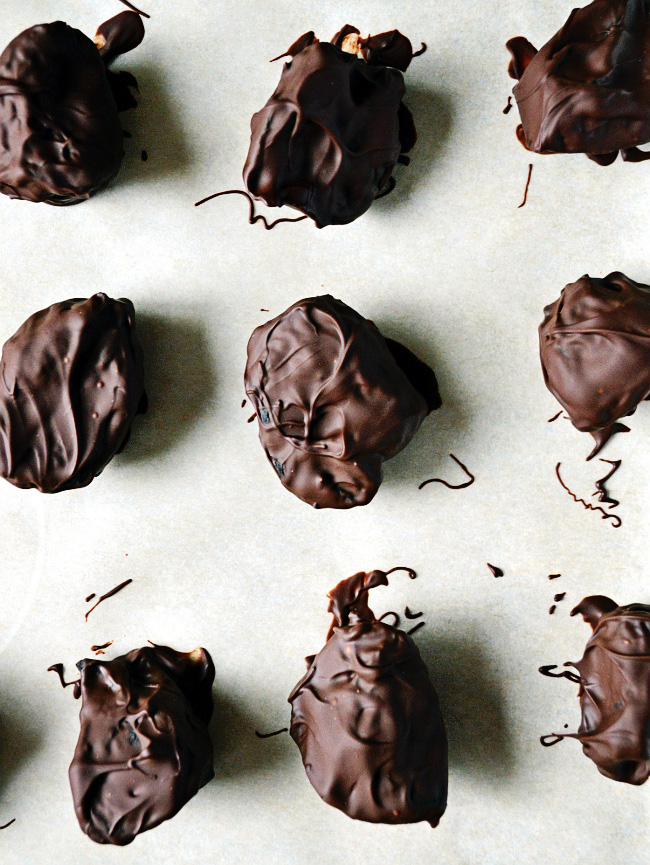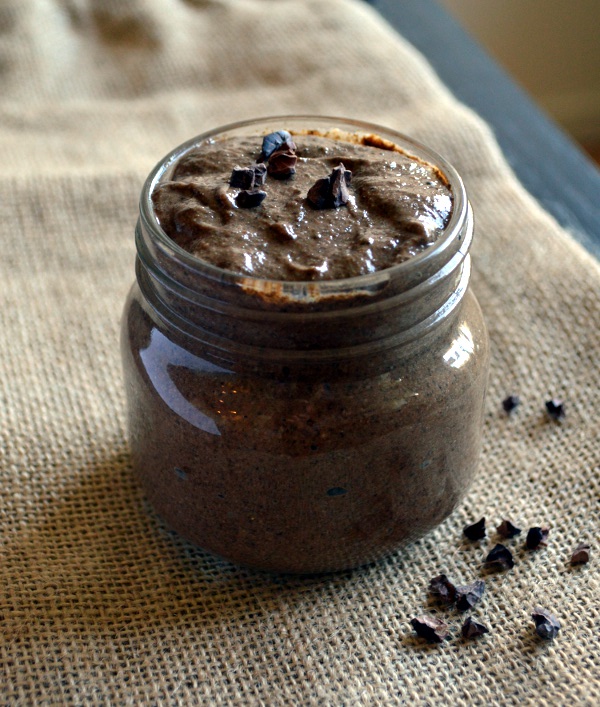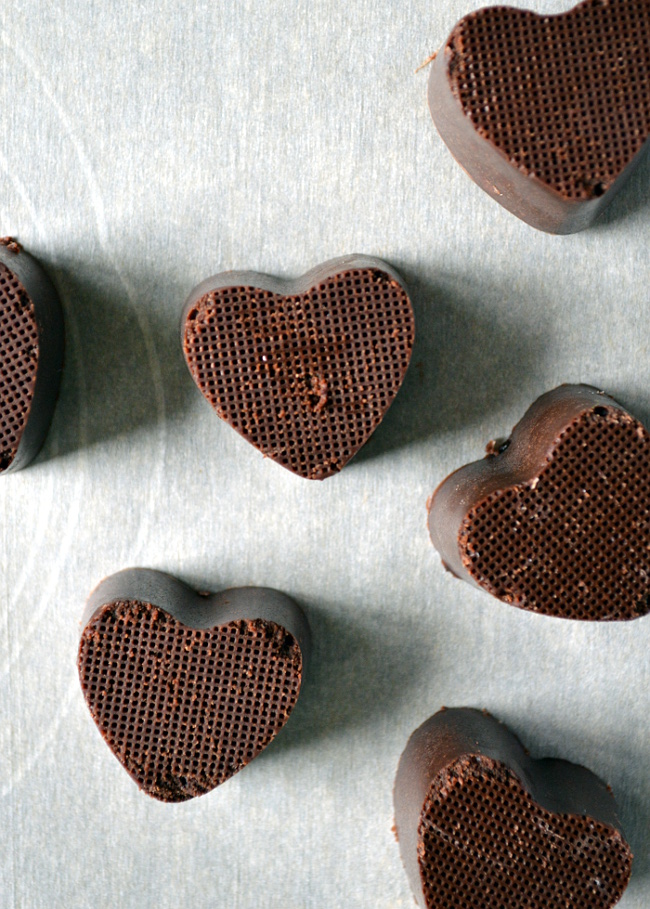What do you do when you’ve been diagnosed with a food allergy and your favourite foods are taken away? Fear not! Each month FBC member and certified nutritionist, Sondi Bruner, takes a look at how to adapt to an allergen-friendly diet, while still eating delicious and healthy food. This month she share everything about chocolate - a favourite food for many!

The holiday season is approaching and we might as well call it chocolate season, right? From advent calendars to Chanukah gelt to pre-wrapped chocolate gift boxes, chocolate is a go-to present and dessert during holiday celebrations.
In a previous Allergen-Friendly Remix column, I walked you through how to make homemade dairy-free chocolates. Today, I'm going to share where chocolate actually comes from, the different parts of the bean we can use and its amazing health benefits.
What Is Chocolate Anyway?
We're accustomed to seeing the end result of chocolate production — wrapped chocolates or chocolate bars — so many of us might not consider or know where chocolate begins. Chocolate is a fruit derived from a tropical plant called Theobroma cacao, which produces leathery pods. The seeds from the cacao pods, the cacao beans, are then harvested, fermented and transformed into several components, as discussed below.
Cacao Powder and Cocoa Powder

These are made by removing the fat from the cocoa bean and grinding and drying what's left, which is mostly fibre along with vitamins and minerals. The difference between cacao and cocoa powder is that the latter is roasted at a higher temperature. I personally find cocoa powder tastes much sweeter than the raw cacao version.
How to use cacao/cocoa powder: Add the powder to dairy-free chocolate, baked goods, dairy-free ice cream, pudding, hot chocolate, smoothies and chili recipes. You can also use it in homemade beauty care products.
Cacao Butter
This is the oil extracted from the cacao bean, so it's basically pure fat. (But, as we know, certain fats are great for our health, including this one). Cacao butter is an important part of good chocolate and if you've ever caught a whiff of pure cacao butter, you'll know it smells like heaven.
How to use cacao butter: Incorporate cacao butter into your homemade chocolate recipes, add a spoonful to hot drinks for extra flavour and creaminess, or use it to make dairy-free white chocolate. Since cacao butter is non-toxic, it's also a great one to use in beauty care products like moisturizer, lip balm or candles.
Cacao Nibs
Cacao nibs are whole cacao beans that have been dried and crumbled into pieces. They have an intense flavour that some people find bitter, especially if they are used to eating very sweet or milk chocolate.
How to use cacao nibs: Use 'em like chocolate chips! While they have a strong flavour on their own, when incorporated into baked goods, stirred into granola or sprinkled over cereal and oatmeal the taste mellows.
The Health Benefits of Chocolate

I'm about to make your day: chocolate is great for you! It's rich in a wide variety of nutrients, including antioxidants, minerals, omega-3 fats and fibre. Some of the major compounds in chocolate are:
- Theobromine. This compound is similar to caffeine, but it doesn't have the negative side effects of caffeine or stimulate the central nervous system. It can help stimulate as well as relax us. This is the part of chocolate that is toxic to dogs, so ensure you keep all chocolate goodies away from your furry friends.
- Anandamide. This is known as "the bliss chemical." Anandamide binds to the cannabinoid receptors in the brain, mimicking the effects of cannabis drugs. This means chocolate puts us in a fantastic mood!
- Phenylethylamine (PEA). This is the aphrodisiac property of chocolate. It boosts dopamine levels in the brain and brings on feelings of excitement and euphoria, much like when we fall in love.
- Antioxidants. Chocolate contains more antioxidants than green tea, black tea or red wine. Antioxidants help protect us from the free radicals that can cause cellular destruction and aging.
So to sum up: chocolate will help you look younger, get stoned and feel orgasmic. Just kidding! (Maybe?)
And I'm not even finished with talking about the health benefits of chocolate. Some other positives include:
- Chocolate is rich in magnesium, which helps us relax our muscles, and it contains energy-boosting iron.
- Chocolate can stimulate the immune system.
- Chocolate is good for cardiovascular health. This meta-analysis of chocolate and cardiovascular disease concluded that chocolate helps to lower blood pressure, improves platelet function, decreases inflammation and oxidation, and reduces the risk of cardiovascular disease.
- Chocolate is anti-inflammatory. Research indicates that chocolate can prevent the production of compounds that cause inflammation. Some studies also contend that chocolate can modulate intestinal inflammation, including the inflammation involved in inflammatory bowel disease, pancreatis and even cancer.
- Chocolate can boost brain function. Studies show that chocolate can improve cognitive function and lowers our risk of cognitive decline.
Does this all sound too good to be true? It's not, but I will offer you a caveat: the quality of your chocolate matters. Conventional chocolate loaded with refined sugars, preservatives or artificial colours detracts from our health and dampens the positive benefits of chocolate. If possible, choose dark chocolate with a high cocoa content. Generally, a higher cocoa content means there will be less sugar.
Consider Fair Trade Chocolate
Chocolate production has become controversial in the last decade or so and the big chocolate companies have been scrutinized for participating in child labour and slave labour practices. You can read about this in detail here.
Whenever I can, I like to choose fair trade chocolate and buy from companies that support fair wage, labour and economic practices, and make chocolate that is both good for me and the farmers who grow and harvest it.
Mocha Almond Dairy-Free Chocolates

- ¼ cup raw cacao powder
- 3 tbsp coconut oil
- 2 tbsp maple syrup
- 1 tbsp cacao butter, chopped
- 1 tbsp Dandy blend (this is a herbal coffee alternative; you can also use espresso powder)
- 8 almonds, finely chopped (about 2 tbsp)
- Make a double boiler by pouring 2 inches of water into a small pot, then place a bowl on top of the pot. Bring water to a boil.
- Add the raw cacao powder, coconut oil, maple syrup, cacao butter and Dandy blend. Whisk until everything is melted and incorporated. Remove from the heat.
- Stir in the chopped almonds.
- Pour the chocolate into molds. If you don't have a mold, use a loaf pan or small baking dish lined with parchment paper. You can chop the chocolate up into squares after it sets.
- Chill in the fridge for a few hours until set.
How do you like to use chocolate in your everyday cooking? Please share in the comments!
More Reading
Check out more of Sondi’s Allergen-Friendly Guides and Recipe Remixes for great ideas on revamping your favourite recipes to make them allergen friendly!
Sondi Bruner is a holistic nutritionist, freelance writer, food blogger and author of the Anti-Inflammatory Diet in 21, The Candida Free Cookbook and Action Plan, co-author of The Anti-Inflammatory Diet and Action Plans as well as multiple e-books on healthy eating. She educates people who follow allergen-friendly diets about how to eat simply, deliciously and safely, allowing them to rediscover the pleasure of food. When she’s wearing her writer’s hat, she works with natural health brands to create content that will help their customers live fulfilling, healthful lives. Find out more at www.sondibruner.com. Or you can follow Sondi on Facebook or Twitter.








Leave a Reply